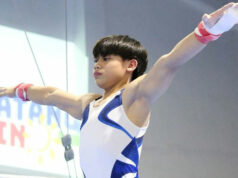Last June 13 I reported that Wesley’s former coach GM Vladimir Tukmakov has written a book where he extensively discusses the work he did with Wesley So. I received a lot of questions and request for information from BW readers and this is a good time to respond to them.
The book is “Coaching the Chess Stars” published by Thinkers Publishing. If you want a copy of this book you can order it directly from their website at www.thinkerspublishing.com. Personally I find the quickest way to get the physical book in front of you is just to use amazon (www.amazon.com). If you, like me, are an Amazon Prime member it should be with you in a matter of a few days.
If you prefer reading from a computer or tablet screen then you should download the Forward Chess app on to your Windows/Android/MacOS and/or IOS device, and then order it from there. This is instantaneous: after paying for the book it is automatically downloaded to your device and you can immediately start reading it, complete with the chess set which materializes on your screen if you want to go through some chess games, including its annotations, and even have a chess engine analyze in the background as you are scrutinizing its variations. This new mode of reading chess books is really cool!
Talking about online publications, a lot of progress has been made recently. For example, New in Chess (www.newinchess.com is well worth a visit!) has app to let you read their magazines and yearbooks from your devices. As has become the standard they also have a chess set which pops up if you want to go over the games in the magazines/yearbooks. This feature is also available in the Chess Studio app, which features Gambit Publications, the outfit of GM John Nunn. Naturally all of Nunn’s books are there as well as nice reference works like Fundamental Chess Endings and Openings.
With almost everything, even Chess Informants (from Forward Chess) available on your device I have lately found myself hardly ever ordering physical books. Anyway, let’s get back to Vladimir Tukmakov and his collaboration with Wesley So.
He started working with Wesley in mid-2016 through Skype. Going back a bit when Wesley was very young he had the benefit of coaching from several Filipino National Masters. I remember GM Joseph Sanchez back in 1998 telling me about this amazing student of his whose quick grasp of tactical as well as strategical nuances is quite astounding. However, after this Bacoor native became a GM at 14 he was basically on his own. Tukmakov writes that “When we started our negotiations, So was ranked 10th in the world with a rating of 2770. I know of no other cases in modern chess history, with the possible exception of Bobby Fischer, where a player working alone has climbed so high.”
The first tournament where Tukmakov was involved in Wesley’s preparation, albeit remotely via Skype, was the 2016 Paris Rapid/Blitz event followed almost immediately by the Leuven Rapid/Blitz tournament. Tukmakov: “My participation in the direct preparation for the games was limited to general advice. Throughout his chess career, Wesley had been forced to study openings on his own and it would have been unwise to change his long-established habits.”
They had training sessions twice a week, this allowed the coach enough time to plan an upcoming Skype session in detail and to prepare appropriate material, while the student also had time to analyze his coach’s proposals and recommendations. This set-up proved very successful.
Soon after the collaboration started Wesley achieved his first ever super GM tournament win in St. Louise. “A humble boy from the Philippines realized that he could fight the best players in the world on equal terms — and even beat them.”
Coach and student met up in the Baku Olympiad, where Tukmakov was captain of Team Netherlands while Wesley played for the United States. After that it was back to Skype again. At the end of the year came the London Classic, the last and most important tournament of the year, and Wesley was its solo winner. This catapulted him to the 2016 Grand Chess Tour overall winner by a wide margin, 11.5 points ahead of second-placed Nakamura.
In 2017 came further successes in Wijk aan Zee, the USA-championship where Wesley got the title for the first and so far only time. He was also by then the second highest-rated player in the world behind world champion Magnus Carlsen.
Tukmakov then tried to “intensify” Wesley’s game. “In practical terms, it would mean not playing for a draw, even with Black. I believed that Wesley would gain an advantage in complicated positions due to his intense concentration during games and to an almost complete absence of gross errors.”
They tried this new approach in the 2017 Gashimov Memorial but it was not successful and Wesley shifted back to his usual style for the rest of the tournament. The next tournament was 2017 Norway Stavanger and Wesley drew all of his games.
Tukmakov joined “Team Wesley” physically for the first time in the 2017 Paris Rapid/Blitz event, but the chemistry they had established through skype training did not work in personal contact. After several less than successful tournaments in 2017 they then realized that their cooperation had exhausted itself and Tukmakov was no longer with the team in March 2018 when the Berlin Candidates’ tournament started.
It is time to discuss this game from the first round of the Zagredb leg of the 2019 Grand Chess Tour.
So, Wesley (2754) — Ding, Liren (2805) [A23]
Croatia Grand Chess Tour (1.3), 26.06.2019
1.c4 e5 2.g3
Interesting. We just wrote about Philippine Women’s Junior Champion Vic Glyzen Derotas playing 1.c4 followed by 2.g3 every time she has white. It is plain to see who her role model is. GM Simon Williams suggests here that a good counter for Black is to play …Nc6 (to prevent White’s d2–d4) followed by …f7–f5 and get a favorable version of the Classical Dutch.
Another possibility is the Keres Variation which consists of …c7–c6 and …d7–d5. Ultimately this is what Ding goes for.
2…Nf6 3.Bg2 Bc5 4.Nc3 c6
You will notice that Black waited until Wesley played Nc3 before his …c7–c6. This way there is the possibility of harassing the white knight with a quick …d7–d5–d4.
5.e3 0–0 6.Nge2 d5 7.cxd5 Nxd5 8.d4 exd4 9.Nxd5 cxd5 10.exd4 Bb6 11.Nc3 Nc6 12.Be3
[12.Nxd5 Bh3! is to be avoided]
12…Be6 13.0–0 Qd7 14.Na4 Rfd8
[14…Bc7 15.Nc5]
15.Nxb6 axb6 16.Qb3
Let us recall what Tukmakov said about Wesley’s style: “It was not accidental that Wesley’s play was cautious and pragmatic. These traits were the product of his development as a player. The young Filipino didn’t have a lot of chances to face elite players, so he was way too reverent and timid. An articulated respect for one’s elders is also a function of an Oriental upbringing.”
I made it clear a few columns ago that this was not an accurate assessment. Wesley has an opening system prepared for an event, sticks to it, and if his opponent does not err then it is a draw. If he does err Wesley will go for the win. This game is a good example. White has a small advantage in this game of the two bishops and a better pawn structure. Probably not good enough for a win but Wesley has something to work with and because of that he eschews the draw and grinds away at the position.
16…Ra6 17.Rfc1
With the idea of Bf1.
17…Bh3 18.Bf3 Bg4 19.Bg2 Bh3 20.Bf3 Bg4
Ding wants a draw but Wesley wants to play on.
21.Bh1 h5
It is not easy to spoil White’s coordination: 21…Na5 22.Qb4 Nc6 23.Qb5; However: 21…Qf5!? deserved attention with the obvious idea to get rid of the enemy light-squared bishop. Most likely Ding disliked: 22.f3 Bh3 23.Bf2 and was afraid that his bishop will be left out of game, but he can always bring it back with something like: 23…Qf6.
22.h4 Be2 23.Kh2 Qf5 24.Bg2 Na5
In the post-game conference Wesley remarked that the text was a bad move which allowed him to activate his two bishops. Instead he suggested to grab a pawn with 24…Bc4 25.Qd1 Rxa2 26.Rxa2 Bxa2 but something like this seems very risky. After 27.Bh3 Qg6 28.b3 Ra8 29.Bg2 Qf5 30.Bf4 it is not clear how to extricate the bishop. For example 30…Na5 31.b4 Nc6 32.b5 Na5 33.Rc7 Bc4 34.Re7 White’s threat of Re5 is looking dangerous.
25.Qc3 Nc6 26.b3 b5 27.Qd2 Bf3
[27…Bd3 28.Rc3 Be4 29.f3 does not solve his problem]
28.Bf1 Rb6?! <D>
POSITION AFTER 28…RB6
Methinks he should have just given up the pawn. Ding perhaps didn’t see Wesley’s next move.
29.Bf4!
With the idea of Bc7.
29…Rc8?!
This move shows you why Ding is so hard to beat. He could have resigned himself to losing a pawn after 29…Qd7 30.Qc3 Be4 31.f3 Bf5 32.Qc5, but moving the rook to c8 has a tactical point which you will soon see.
30.Rc3 Bg4
Not 30…Be4? 31.Bh3.
31.f3
Trapping the bishop, but now you see Ding’s resource.
31…b4 32.Rd3 Bxf3 33.Rxf3 Ne5!
Black has the idea of …Rc2 pinning the queen against the king.
34.dxe5 Rc2 35.Rf2 Rxd2 36.Rxd2
Ding’s resource is not enough though. Wesley consolidates his pieces strongly and overpowers Black’s forces.
36…Rc6 37.Bh3 Qg6 38.Rad1 Ra6 39.Bg2 d4 40.Bxb7 Ra5 41.Rxd4 Rxa2+ 42.R1d2 Qb6 43.Rxa2 Qxd4 44.Rd2 Qc3 45.Bd5 Kf8 46.Bc4 Ke7 47.Bg5+ f6 48.exf6+ gxf6 49.Re2+ Kd7 50.Bd2 1–0
Winning the b4 pawn, and Ding gives up.
Bobby Ang is a founding member of the National Chess Federation of the Philippines (NCFP) and its first Executive Director. A Certified Public Accountant (CPA), he taught accounting in the University of Santo Tomas (UST) for 25 years and is currently Chief Audit Executive of the Equicom Group of Companies.



